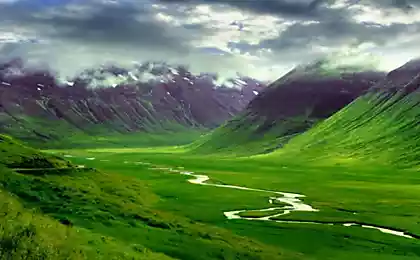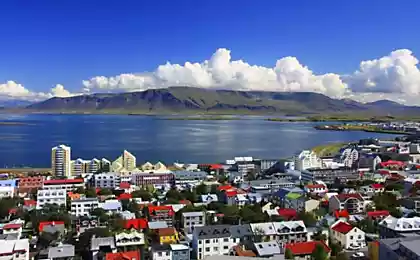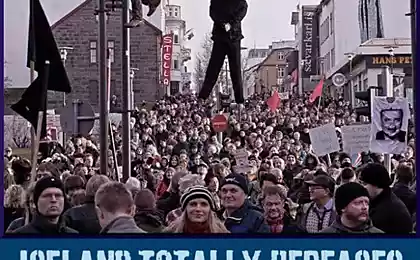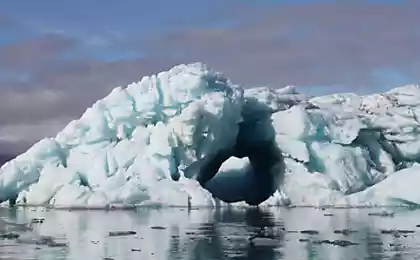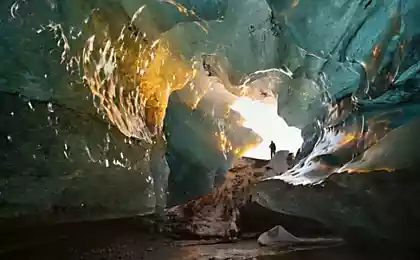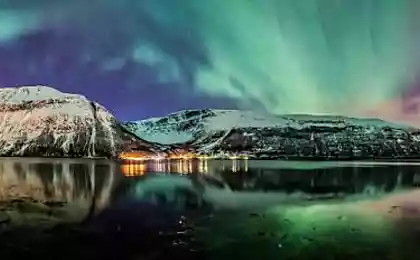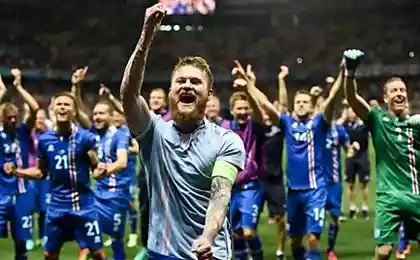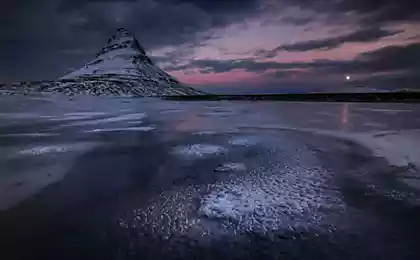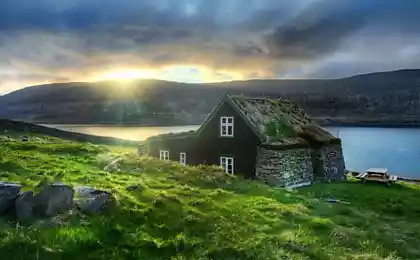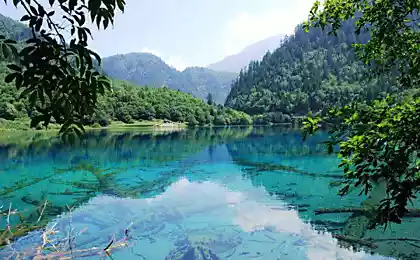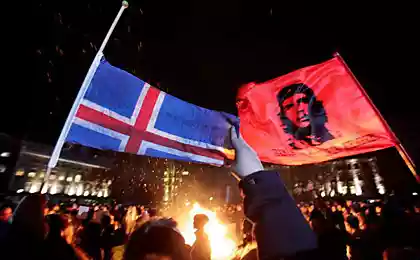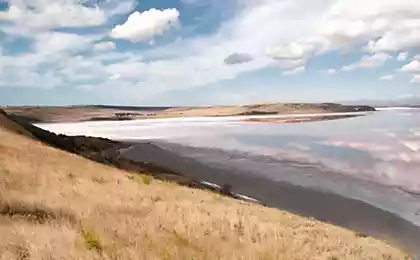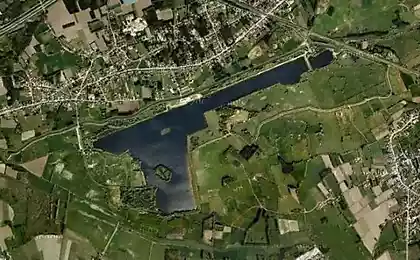230
Photo report — glacial lake Jokulsarlon in Iceland
Jokulsarlon is a place where glaciers reflecting the color of the sky can be seen at arm's length. It is a large glacial lake, which belongs to one of the most famous sights of Iceland. It is located in the south-east of the country, between Skaftafell National Park and Höfn, branching from the southern part of the largest glacier in Europe, Vatnajökull. Today, the glacial lake of Jokulsarlon is regarded as one of the natural wonders of Iceland.
Translated from Icelandic Jokulsarlon means “lagoon of an ice river”, from which the lake received another name – glacial lagoon. Back in 1903, the extreme point of the Vatnajökull glacial massif lay at a distance of 200 meters from the sea. Already in 1934, as a result of the fact that the glacier began to slowly retreat from the shore of the Atlantic Ocean, the formation of the lagoon was initiated. Leaving the lowlands, he left behind giant blocks of ice and melt water.
Icebergs, accumulating at the neck of the bay, slowly melted until they turned into relatively small pieces and floated out to sea.
When the rate of melting of Icelandic glaciers increased, the lake rapidly increased in size. Today its area is about 18 km2, while in 1975 it was only 8 km2. Jokulsarlon lies about 1.5 km from the ocean shore, and its depth - about 250 m - at the moment makes it the deepest lake in Iceland, while the boundaries of the reservoir are constantly expanding.
It is not at all surprising that this place is very popular, because it opens a truly picturesque spectacle: different caliber white and blue ice floes, sometimes reaching approximately 30-meter height, gradually drift along the powerful cliffs of the Vatnajökull glacier massif. Especially picturesque look local landscapes acquire during sunrise and sunset.
With warming, icebergs actively break off and melt, but in winter, when the bay freezes, they find themselves in an icy embrace until the onset of the next spring. Thus, huge bluish pieces of glacier, like giant statues of ice, are located throughout the area of the lagoon.
Together with the tide, representatives of marine fauna fall into the lake. In winter, near the coast of the lagoon there is a large accumulation of seals actively catching fish. Sea birds in huge numbers circle over the expanses of the glacial lake, hunting trout, salmon, herring and other fish.
Glacier Lake Jokulsarlon is Iceland’s most photographed landmark. This almost typical Arctic landscape has appeared many times on the covers of various magazines and has even been the set for several films. To date, the landscapes of the glacier lagoon can be seen in four Hollywood blockbusters: in two films about the adventures of Agent 007, A View to Kill (1985) and Die, But Not Now (2002), Laura Croft: Tomb Raider (2001), Batman: The Beginning (2005). Also, the fabulous landscapes of the lake took part in the reality show Amazing Race and in several commercials.
Jokulsarlon is located near the Icelandic District Road, which offers a wonderful view of the glacial lagoon. This picturesque picture even gave its name – “The Ghost Procession of Glowing Icebergs along Jokulsarlon”. Travelers traveling between Reykjavik and Höfn usually stop by the lake in a special car park to admire the opening scenery.
Travel agencies regularly organize jeep and snowmobile tours to the lake. In the period from May to September, 30-minute boat trips between drifting icebergs are offered, which will give a lot of unforgettable impressions. During the summer months, there is a small restaurant on the eastern side of the lagoon.
Source:udivitelno.com
Translated from Icelandic Jokulsarlon means “lagoon of an ice river”, from which the lake received another name – glacial lagoon. Back in 1903, the extreme point of the Vatnajökull glacial massif lay at a distance of 200 meters from the sea. Already in 1934, as a result of the fact that the glacier began to slowly retreat from the shore of the Atlantic Ocean, the formation of the lagoon was initiated. Leaving the lowlands, he left behind giant blocks of ice and melt water.
Icebergs, accumulating at the neck of the bay, slowly melted until they turned into relatively small pieces and floated out to sea.
When the rate of melting of Icelandic glaciers increased, the lake rapidly increased in size. Today its area is about 18 km2, while in 1975 it was only 8 km2. Jokulsarlon lies about 1.5 km from the ocean shore, and its depth - about 250 m - at the moment makes it the deepest lake in Iceland, while the boundaries of the reservoir are constantly expanding.
It is not at all surprising that this place is very popular, because it opens a truly picturesque spectacle: different caliber white and blue ice floes, sometimes reaching approximately 30-meter height, gradually drift along the powerful cliffs of the Vatnajökull glacier massif. Especially picturesque look local landscapes acquire during sunrise and sunset.
With warming, icebergs actively break off and melt, but in winter, when the bay freezes, they find themselves in an icy embrace until the onset of the next spring. Thus, huge bluish pieces of glacier, like giant statues of ice, are located throughout the area of the lagoon.
Together with the tide, representatives of marine fauna fall into the lake. In winter, near the coast of the lagoon there is a large accumulation of seals actively catching fish. Sea birds in huge numbers circle over the expanses of the glacial lake, hunting trout, salmon, herring and other fish.
Glacier Lake Jokulsarlon is Iceland’s most photographed landmark. This almost typical Arctic landscape has appeared many times on the covers of various magazines and has even been the set for several films. To date, the landscapes of the glacier lagoon can be seen in four Hollywood blockbusters: in two films about the adventures of Agent 007, A View to Kill (1985) and Die, But Not Now (2002), Laura Croft: Tomb Raider (2001), Batman: The Beginning (2005). Also, the fabulous landscapes of the lake took part in the reality show Amazing Race and in several commercials.
Jokulsarlon is located near the Icelandic District Road, which offers a wonderful view of the glacial lagoon. This picturesque picture even gave its name – “The Ghost Procession of Glowing Icebergs along Jokulsarlon”. Travelers traveling between Reykjavik and Höfn usually stop by the lake in a special car park to admire the opening scenery.
Travel agencies regularly organize jeep and snowmobile tours to the lake. In the period from May to September, 30-minute boat trips between drifting icebergs are offered, which will give a lot of unforgettable impressions. During the summer months, there is a small restaurant on the eastern side of the lagoon.
Source:udivitelno.com

